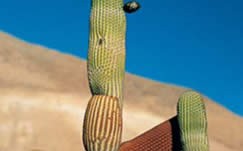Hallucinogenics
The hallucinogenic substances inhalation constituted a common practice between the natives of America. A great number of objects used for this aim, comes from trousseaus undertakers in the San Pedro de Atacama area. The inhalatorios habits were practiced mainly by priests, who acted as magician-religious and curatives inside the society, although also could inhale hallucinogens great part of the population of San Pedro de Atacama, without having the meaning that the priests gave it.
The drug gave the "Chaman" the power to transform into animals or mitologics beings, who they supposed possessors of mysterious forces, and that appear carved and recorded in the tablets and tubes of the hallucinogenic complex.
The most common representations constitute the felines, serpents and condors between the animals. Also the "Sacrificador" is frequent, personage widely spread in the Andean culture that imagines with jaguar mask, taking in the hand an axe and in the other one a cut head. Of this personage it is deduced the ceremonies with skulls trophies and isolated heads were frequent around a feline divinity, that has one long tradition in the Andean area.
Classic complex trousseau is made up of inhalatorios tablets, tubes, spatulas, pylons and grinds hands. The tubes were of bird bone and of wood, this last one is the material most frequent employee in the manufacture of the tablets. With the exception of some units of stones and bone. The typical tablet consists of a rectangular level cavity, although in rare cases it can be round, the majority has some type of decoration.
In the Padre Gustavo Le Paige archaeological museum exists approximately 460 tablets coming from 40 archaeological sites and found in funeral context.

 Now! With traveller reviews from
Now! With traveller reviews from 